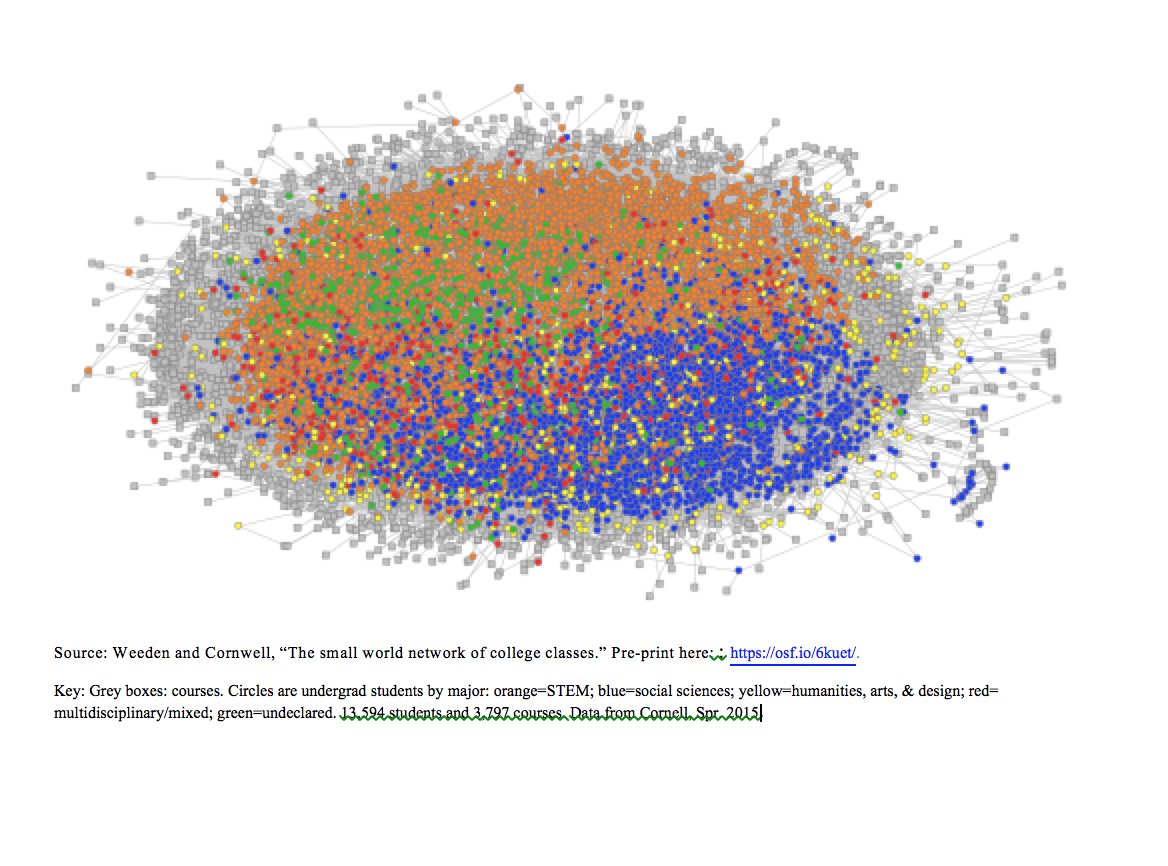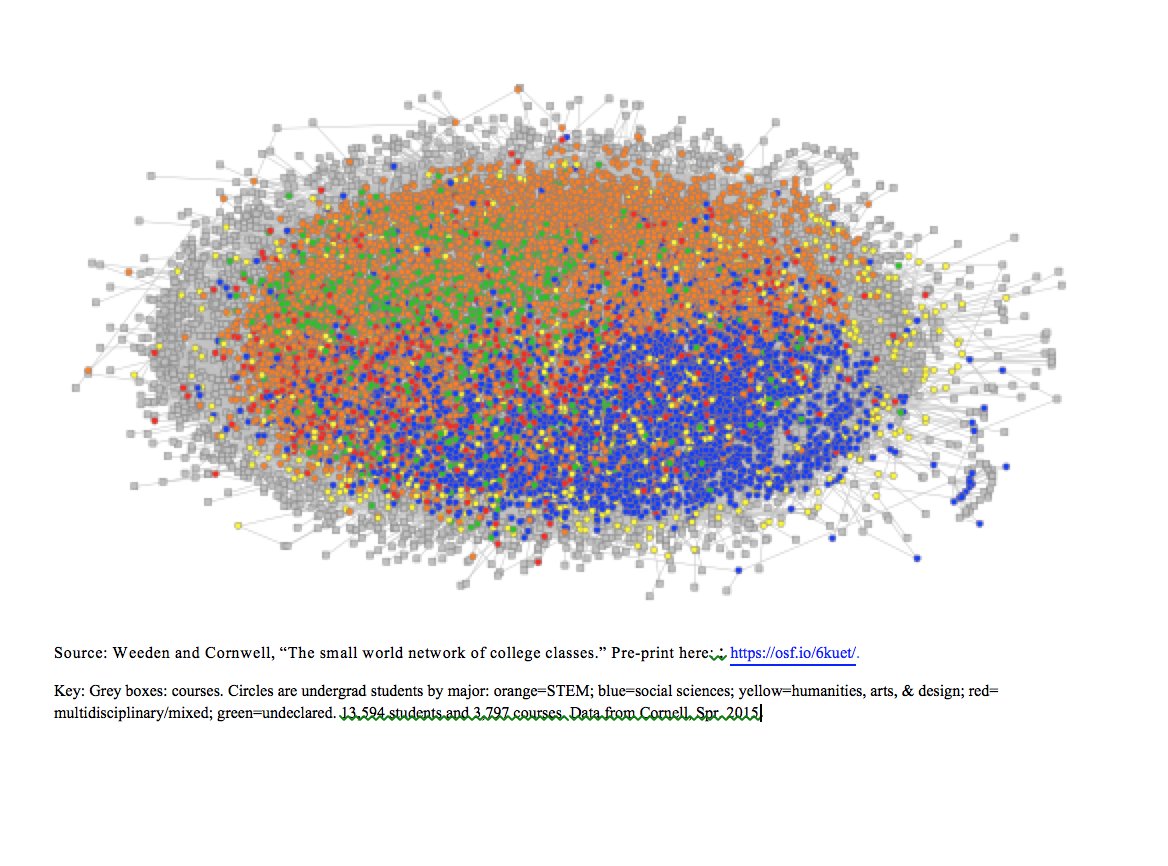Should universities resume face-to-face instruction in fall? Ben Cornwell and I posted a working paper with relevant evidence from @Cornell on the structure of enrollment networks that connect students and classes.
Summary in thread, preprint here: https://osf.io/6kuet/
1/11">https://osf.io/6kuet/&qu...
Summary in thread, preprint here: https://osf.io/6kuet/
1/11">https://osf.io/6kuet/&qu...
Course enrollment networks are small-world networks, with high clustering and short average path lengths. Although only small share of students are connected directly (in same class), nearly all students are connected indirectly through a third student.
More details...
2/11
More details...
2/11
99% of students and courses are connected in the main component of the network. Network has a stadium structure, with large gateway courses in the middle and more advanced courses around periphery.
(Same network as in 1/10, but in this graph courses are the top layer.)
3/11
(Same network as in 1/10, but in this graph courses are the top layer.)
3/11
Over a typical week, the average student will share classes with more than 500 different students. This number is higher for lower-division students, because they tend to take more large introductory courses.
4/11
4/11
The average student can “reach” only about 4% of other students by virtue of sharing a course together, but 87% of students can reach each other in two steps, via a shared classmate. By three steps, it’s 98%.
5/11
5/11
College majors structure the network: STEM (orange), humanities & arts & design (yellow), social sciences (blue), multidisciplinary & multiple majors (red), and undeclared (green) are in different regions of graph.
Same graph as in 1st tweet.
6/11
Same graph as in 1st tweet.
6/11
Even though there’s clustering by major, different majors are connected in the network through distribution requirements and interest-based exploration. A classic @Cornell example: the famous wines course.
7/11
7/11
Would a hybrid model help, where large courses are taught on-line and small classes are taught face-to-face?
Removing courses with 100+ students elongates average geodesic path lengths (from 2.1 to 2.6), but does not disconnect network.
8/11
Removing courses with 100+ students elongates average geodesic path lengths (from 2.1 to 2.6), but does not disconnect network.
8/11
University leaders might consider other solutions. For example, increasing physical distance between students in classrooms, or using local data to identify as many bridging nodes as necessary until network breaks apart.
9/11
9/11
What about course enrollment networks in a liberal arts college?
Liberal arts students are exposed to fewer peers through classes, but network has same "small world” structure. 73% of students can reach each other in two steps or less, 99% in three steps.
10/11
Liberal arts students are exposed to fewer peers through classes, but network has same "small world” structure. 73% of students can reach each other in two steps or less, 99% in three steps.
10/11
Upshot: The “small worlds” networks on college campuses create fertile social conditions for an epidemic spread, even if only consider the connections among students created through courses.
Preprint: https://osf.io/6kuet/ .">https://osf.io/6kuet/&qu... Comments welcome.
@CornellCAS @CornellSoc
11/11
Preprint: https://osf.io/6kuet/ .">https://osf.io/6kuet/&qu... Comments welcome.
@CornellCAS @CornellSoc
11/11
Update: A few notes, since this is taking off:
1) it& #39;s a working paper, and hasn& #39;t been through peer review yet. That said, the network analysis is fairly straightforward stuff.
2) It& #39;s just one uni. Would love to have data from community colleges or other non-residential unis.
1) it& #39;s a working paper, and hasn& #39;t been through peer review yet. That said, the network analysis is fairly straightforward stuff.
2) It& #39;s just one uni. Would love to have data from community colleges or other non-residential unis.
3)It& #39;s just courses. Even on a non-residential campus, students may be in contact w/ each other and w/ faculty/staff in office hours, libraries, hallways. On a residential campus, even more sources of ties: dorms, parties, athletics, extracurriculars, etc.

 Read on Twitter
Read on Twitter






